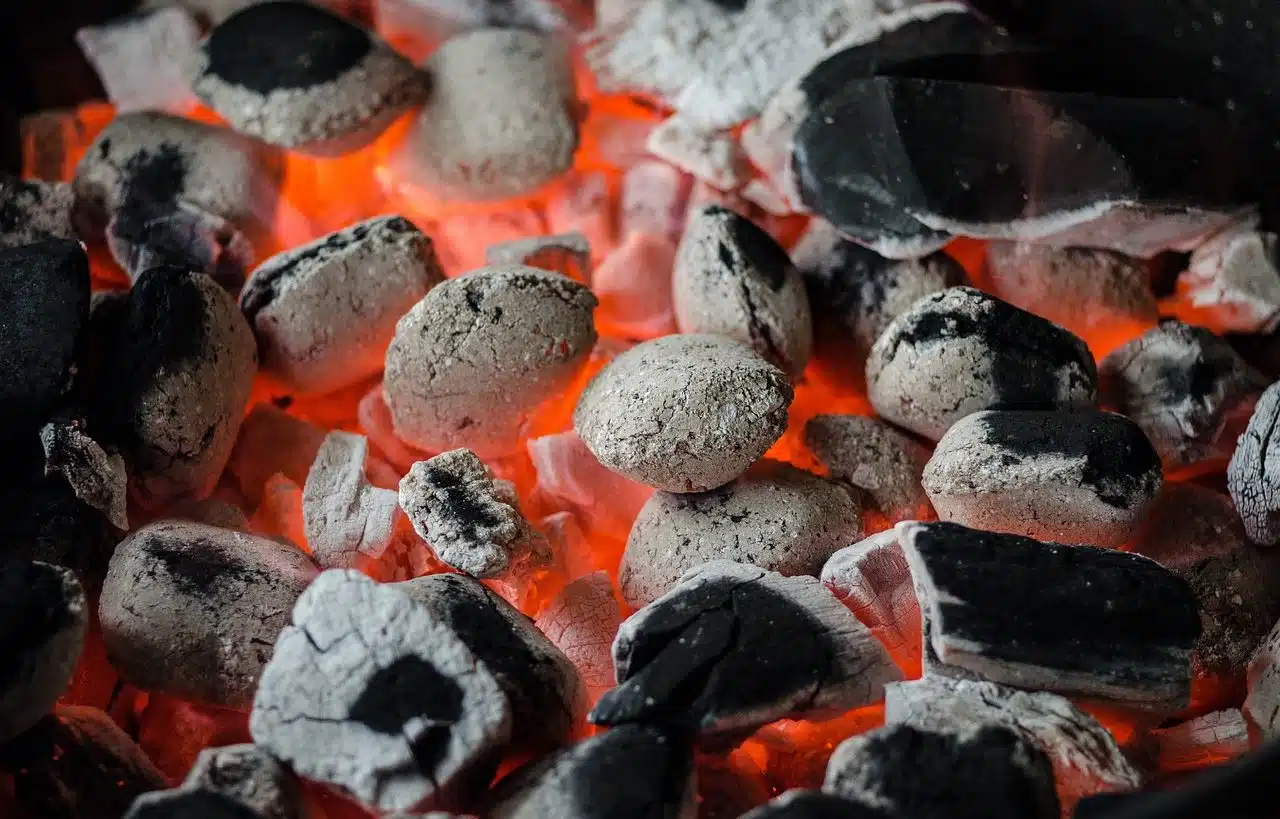
When the fire goes out, the charcoal turns into embers.
Charcoal or firewood is called ember when they are incandescent : that is, reddened by the heat. It should be noted that coal and firewood are solid fuels since, when oxidized, they release energy.
Coal
Coal is a sedimentary rock composed primarily of carbon , along with several other elements, such as hydrogen, sulfur, oxygen, and nitrogen . It is formed from organic plant matter that accumulates and is subjected to pressure and heat over millions of years in geological processes. It is a fossil energy source and is used in various applications such as electricity generation and steel production.
The ember is the product resulting from combustion . When there are no longer flames because the fire has been extinguished, the pieces of charcoal become embers that continue to transmit heat through radiation .
Charcoal is usually used to generate embers that allow food to be cooked. Because flames can take away cooking, it is important that there is no longer a fire but rather that the incandescent embers transmit the heat for the proper cooking of the food.
Grilled meals
Embers are ideal for cooking a wide variety of foods. Let's look at some of them below:
- roast meat : it is one of the most popular preparations. You can cook cuts such as steak, ribs, chops, chicken, pork or lamb, or even vegetable meat. The food gains a smoky flavor and crispy exterior while the interior remains juicy;
- fish : salmon, trout, tuna and sea bass are excellent options for grilling, as they enhance their flavor and give them a unique texture;
- vegetables : peppers, zucchini, eggplants, asparagus, corn and mushrooms, directly on the coals or on a grill ;
- skewers : with pieces of meat, fish or chicken (or their vegetarian alternatives), interspersed with vegetables such as onion, pepper and tomato. They cook quickly and are easy to handle on the grill;
- pizza : the dough is placed over the coals until crispy, then the ingredients are added and cooked until the cheese melts.
from firewood
To obtain embers from firewood, you must start from dry, hard wood , such as oak, beech, or walnut . This is cut into pieces of suitable size: the smaller ones ignite faster, but the larger ones produce longer-lasting embers. They are then placed in a pile or in a structure that allows air circulation; for example, forming a pyramid or a "cabin".
Using matches, a lighter, or a fire starter, you light the wood in the center of the pile. It is recommended to have paper or dry wood chips on hand to speed up the process. As the fire grows, add firewood gradually, but do not overload it , as this can smother the flames. Let the fire develop slowly.
As the fire burns, the wood is consumed and turns into embers: the pieces of burned wood that emit intense, long-lasting heat . It is important to have an adequate and safe space , with a source of water or sand to put out the fire in case of emergency. Also, it is necessary to check local regulations and burning restrictions before lighting a campfire.

To obtain wood embers, dry and hard wood must be used.
To heat
Throughout history, embers have been an essential heat source for heating environments in many cultures and regions of the world. They have played a crucial role in people's survival and comfort during cold seasons.
Its use as a heating source dates back to ancient civilizations. In ancient Rome , for example, embers were an essential element in homes. Roman citizens had ingenious underfloor heating systems to warm the air.
In the European Middle Ages, castles and stately residences had their own braziers that kept the rooms warm and cozy on freezing winter nights. Today, embers can be found in wood stoves, barbecues, and fireplaces, where they continue to provide heat and create a cozy atmosphere.
